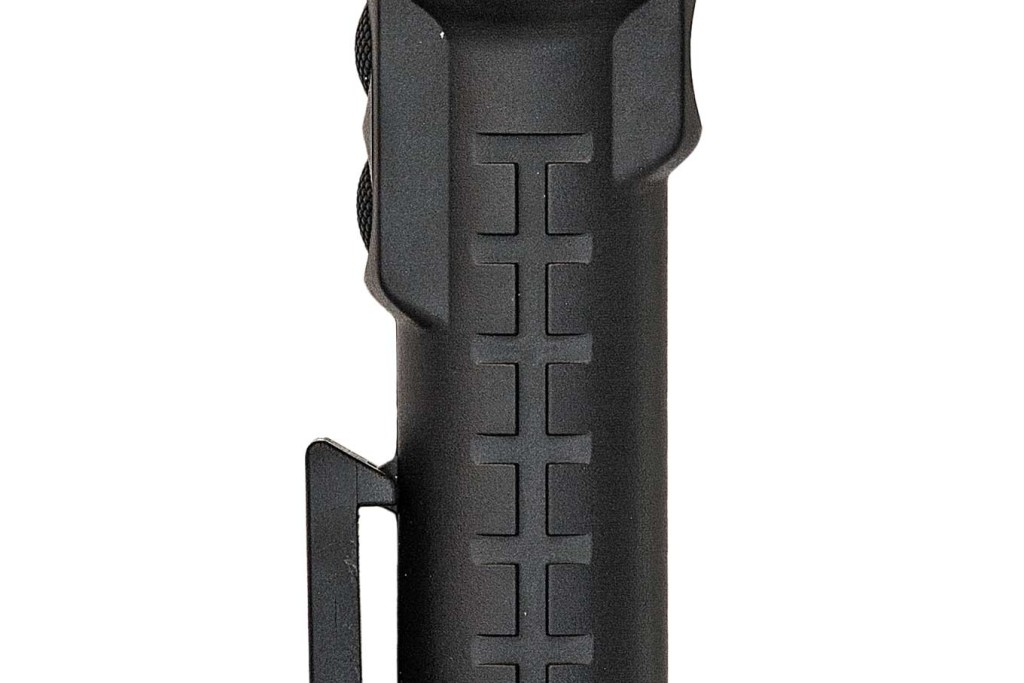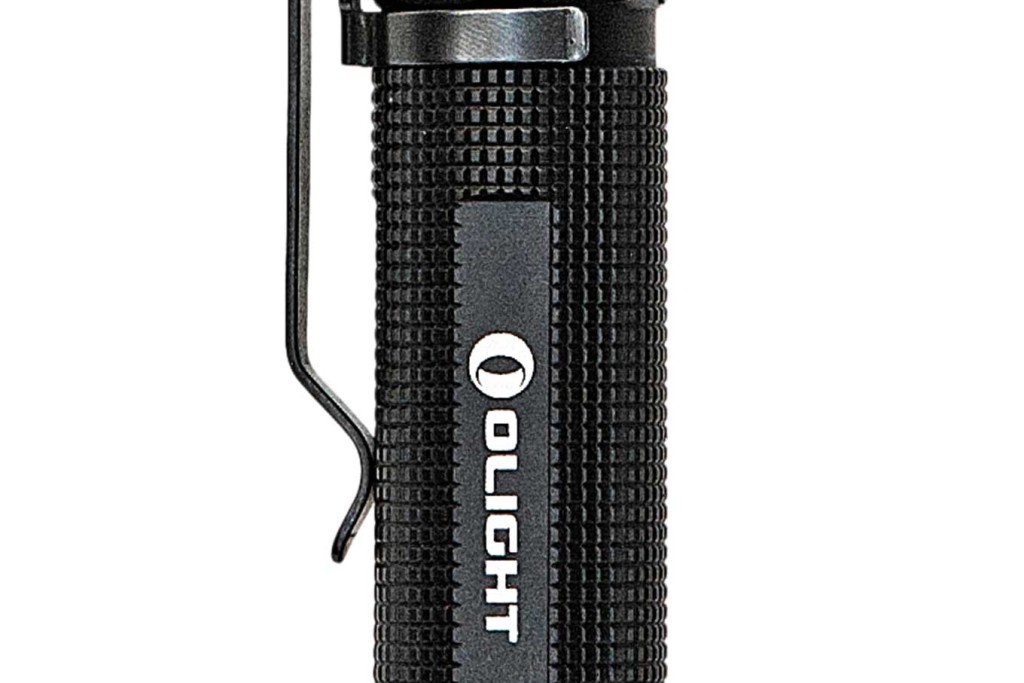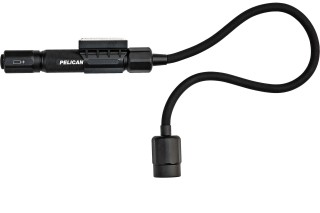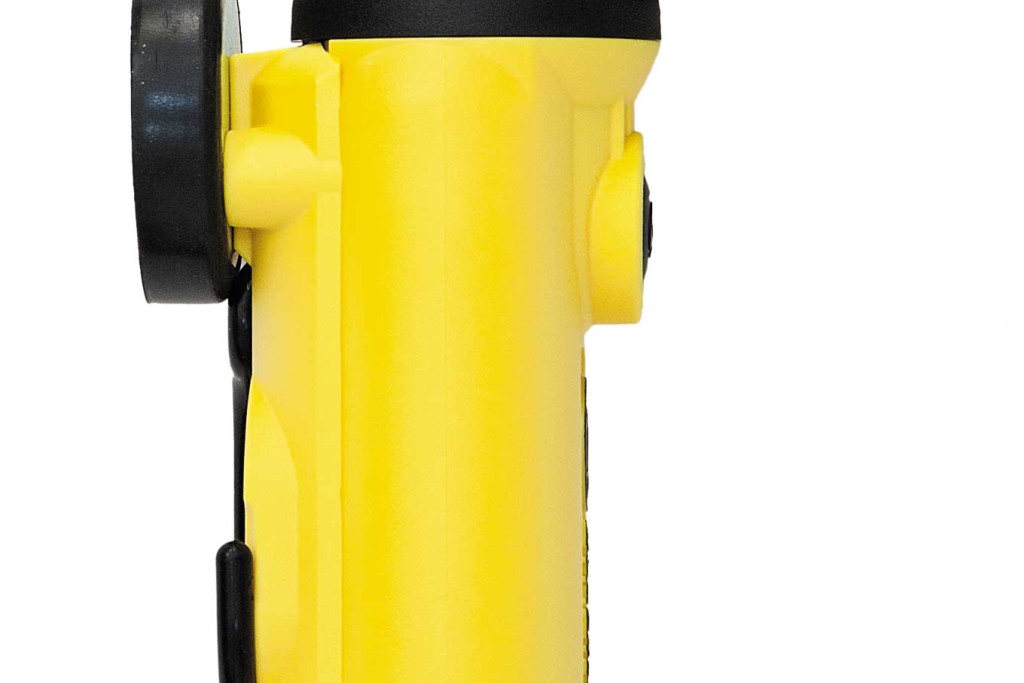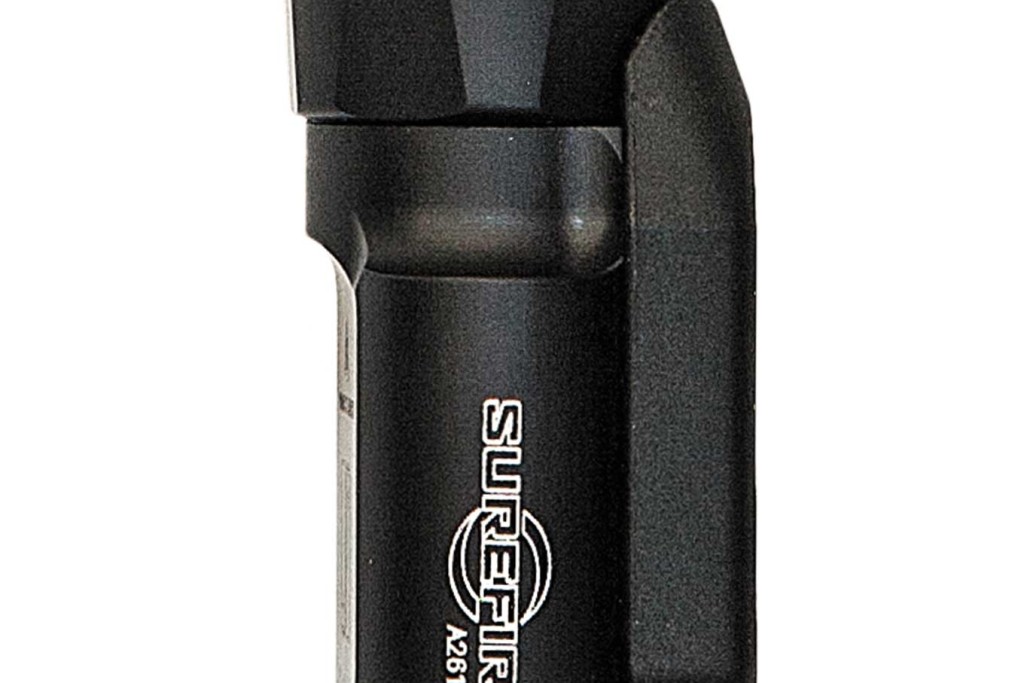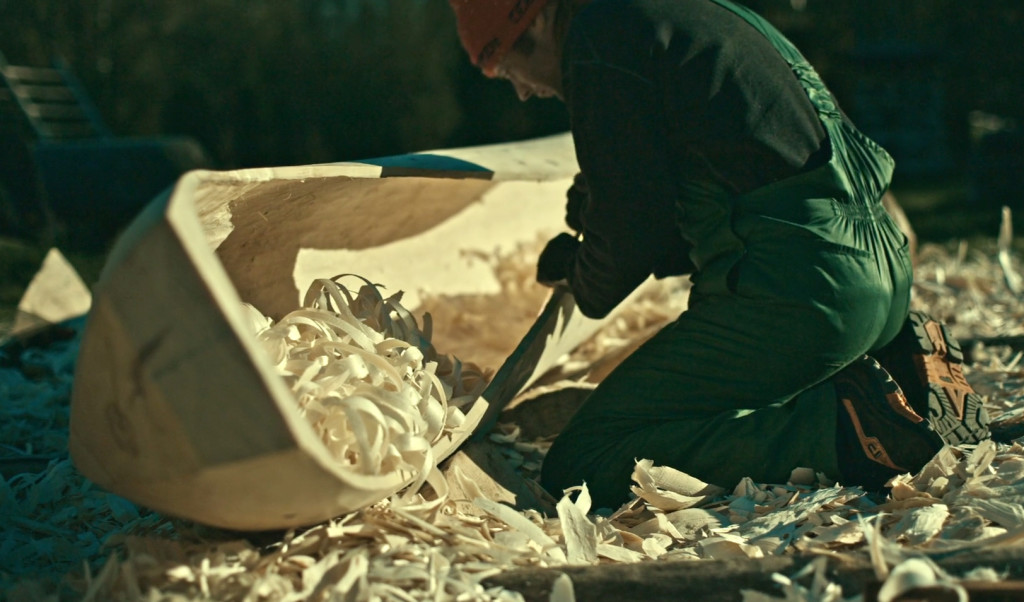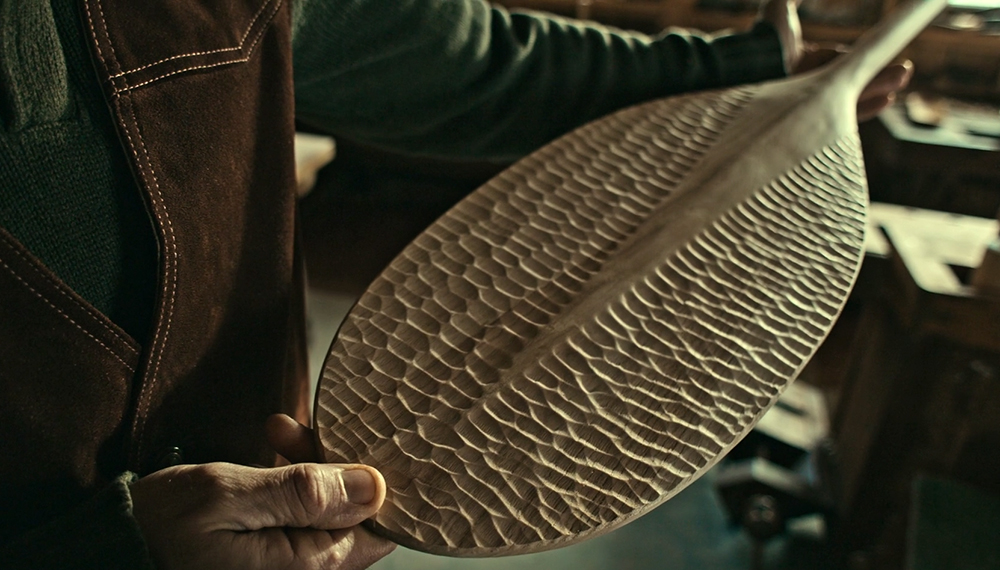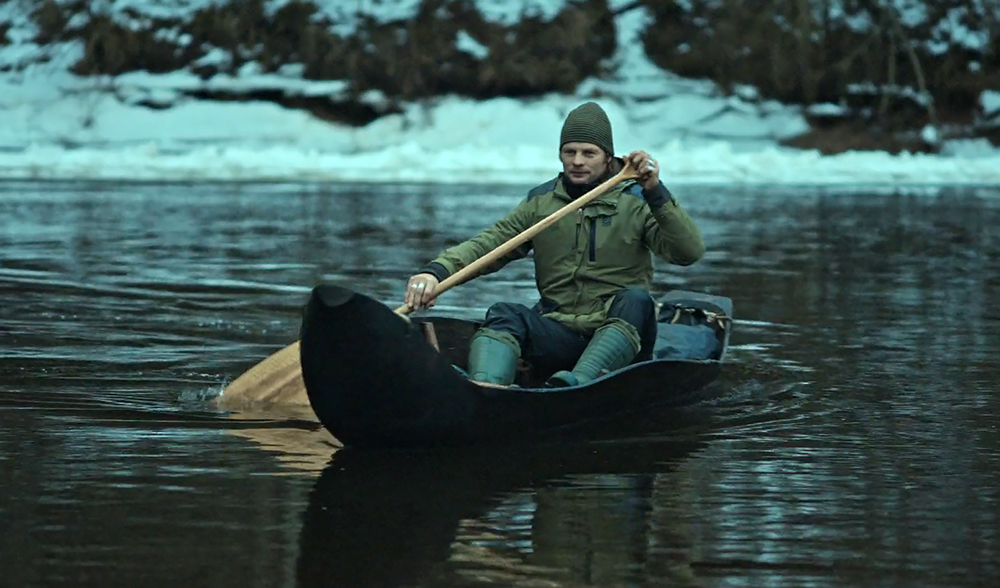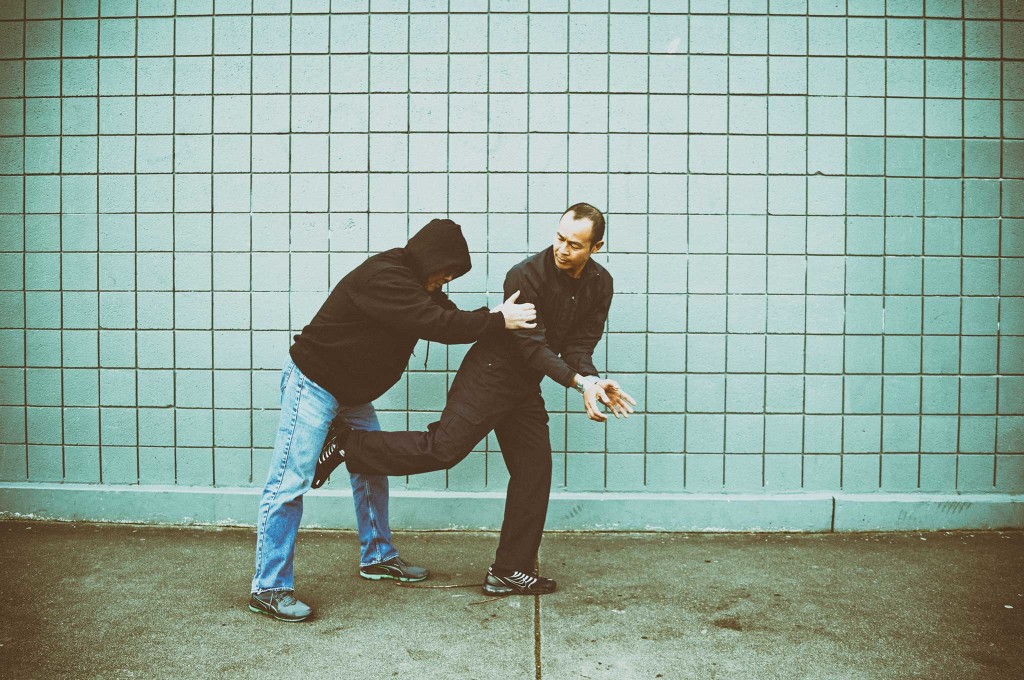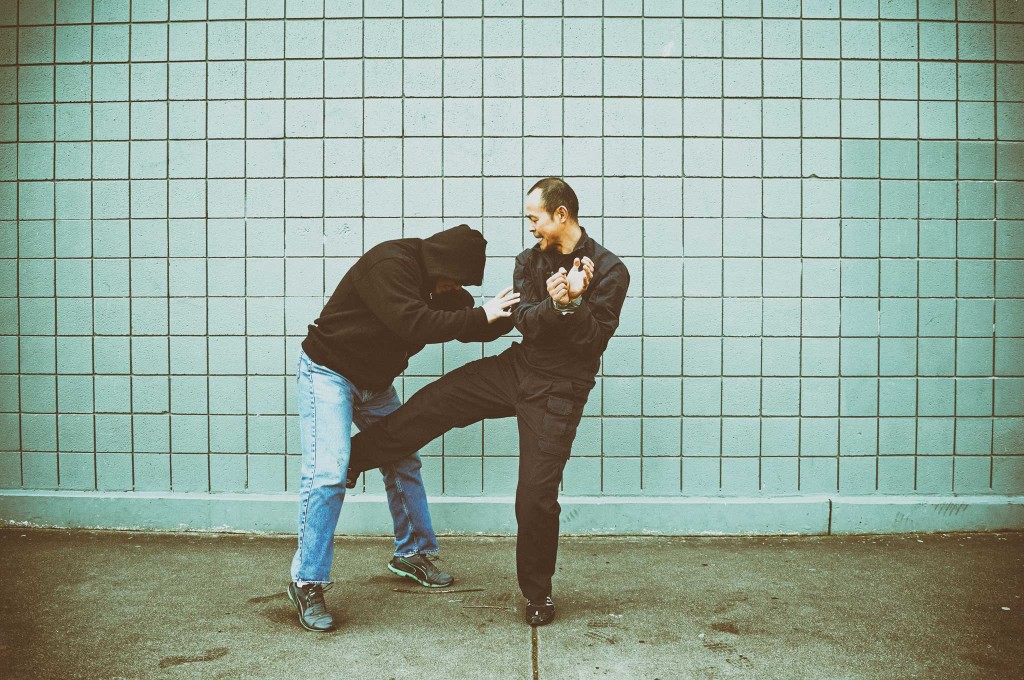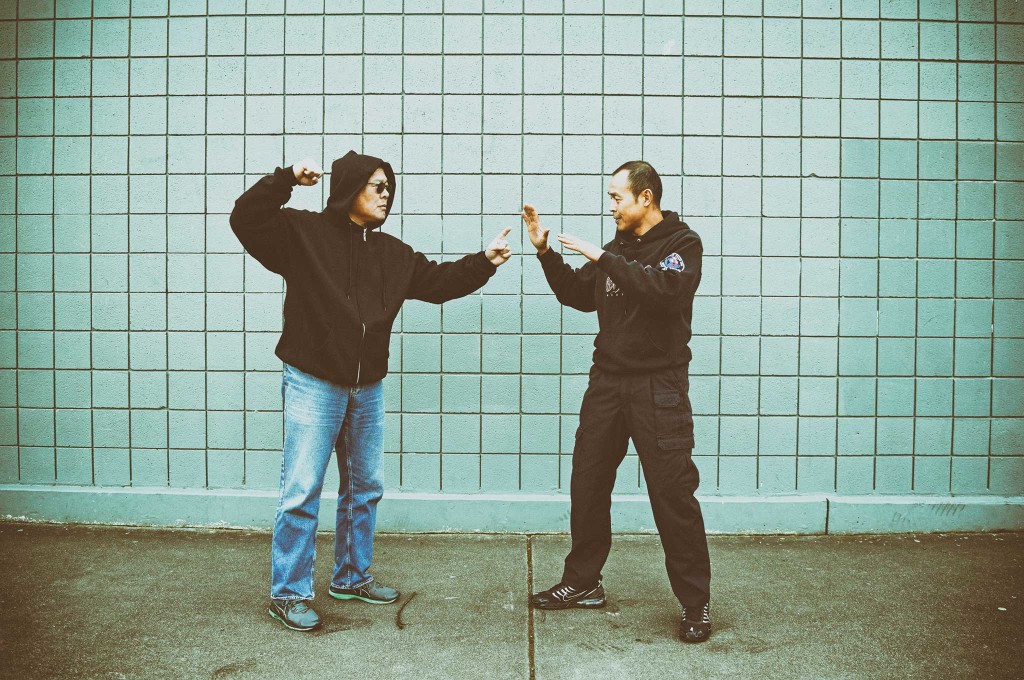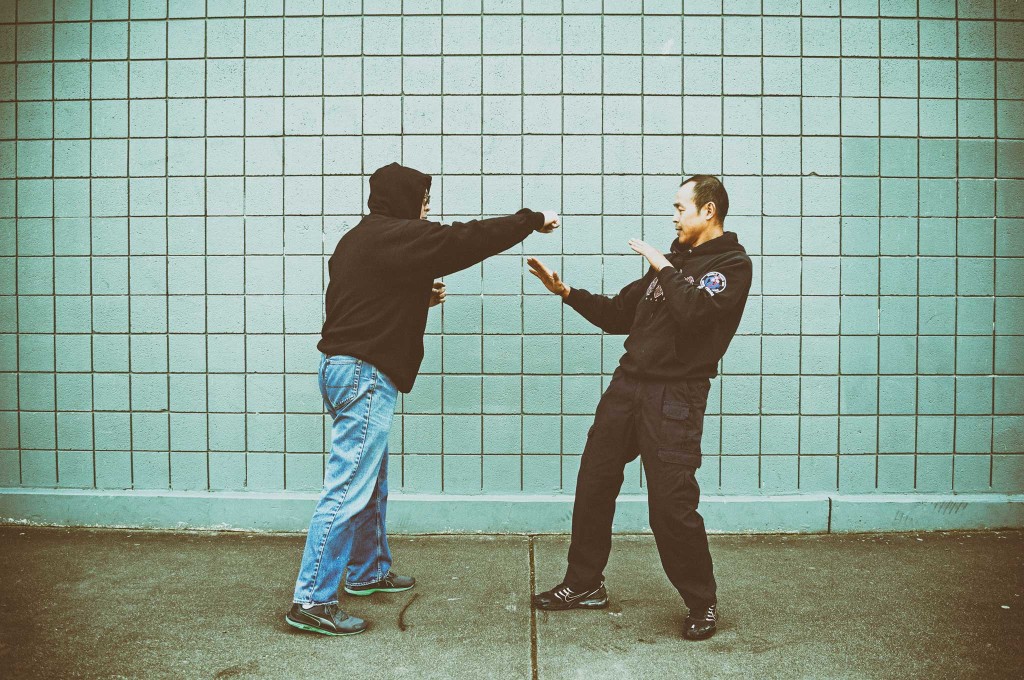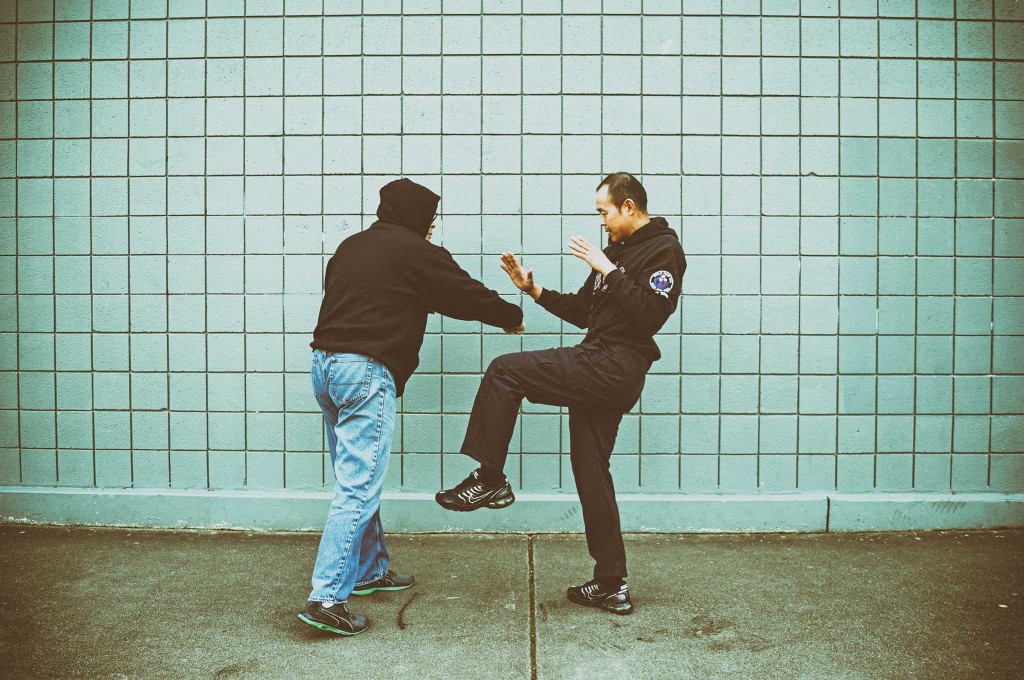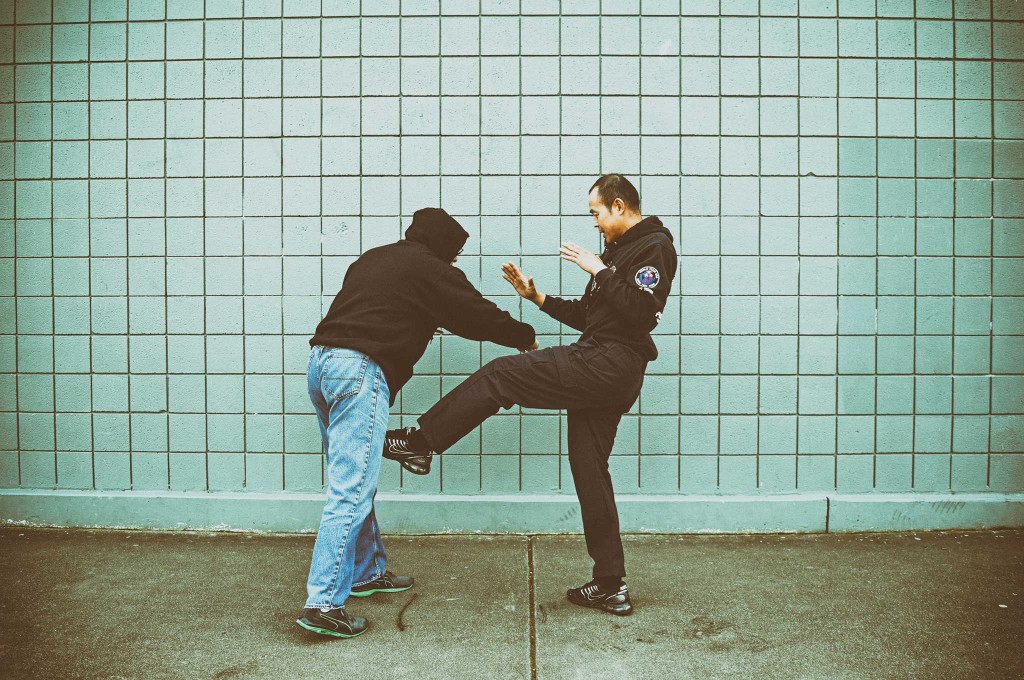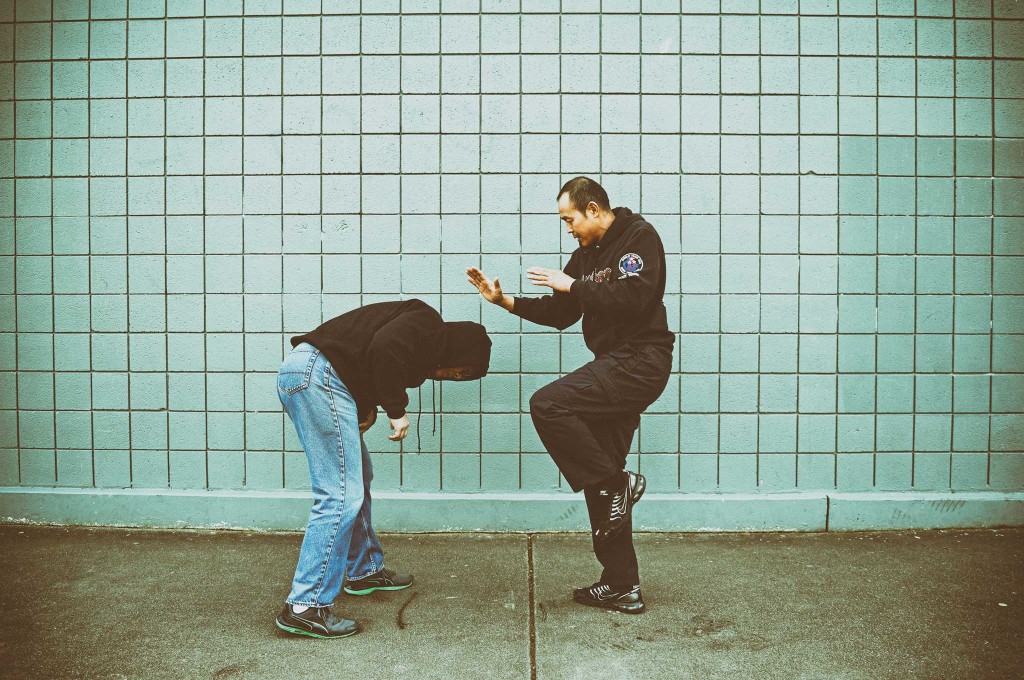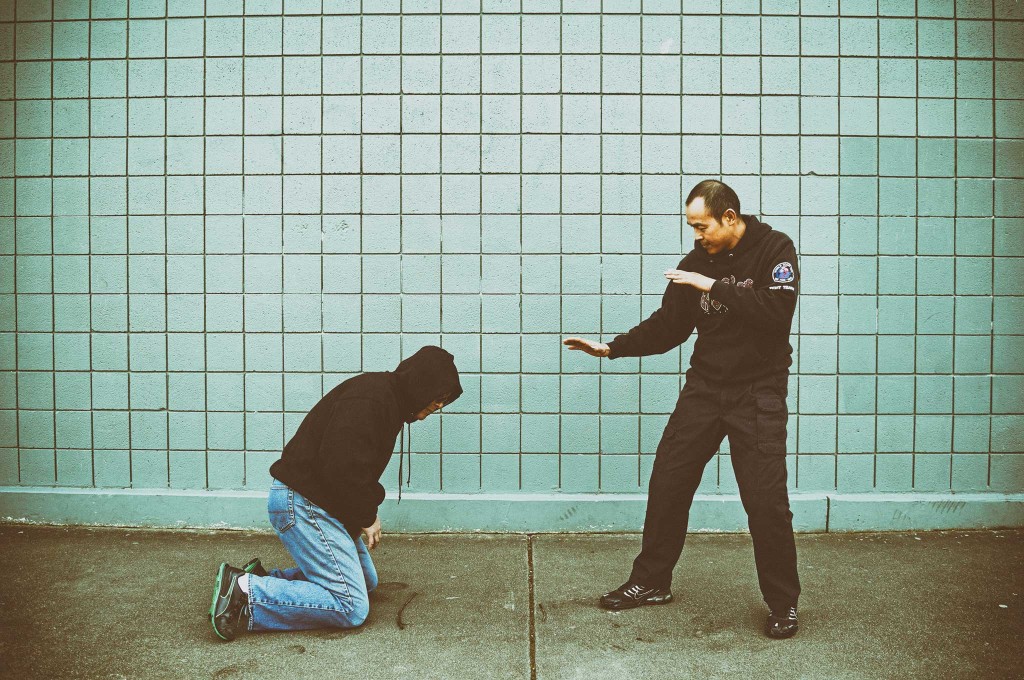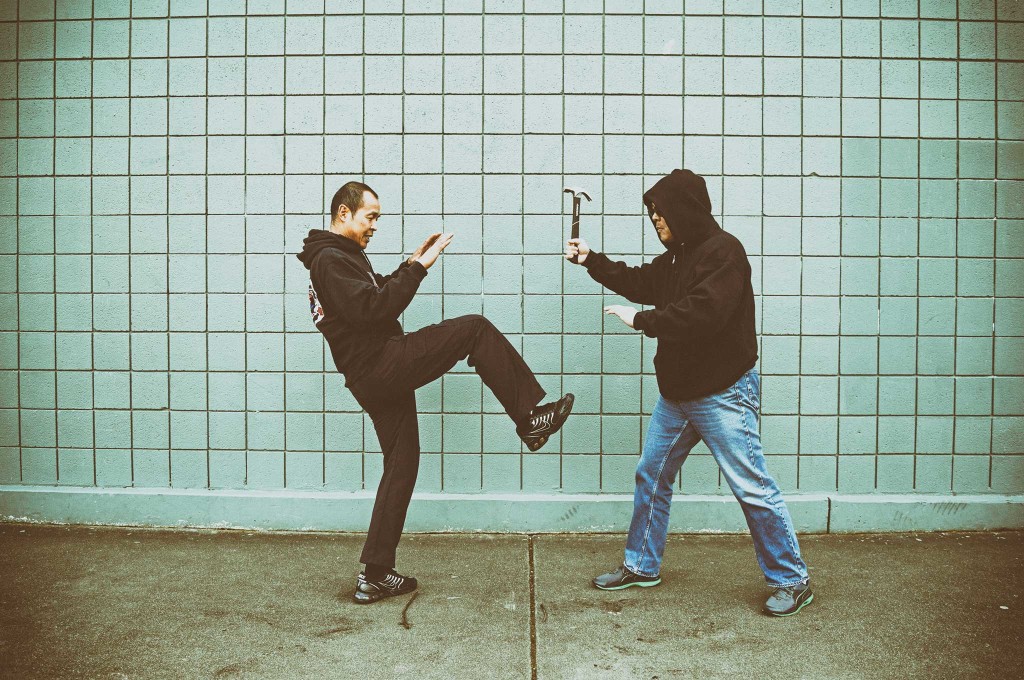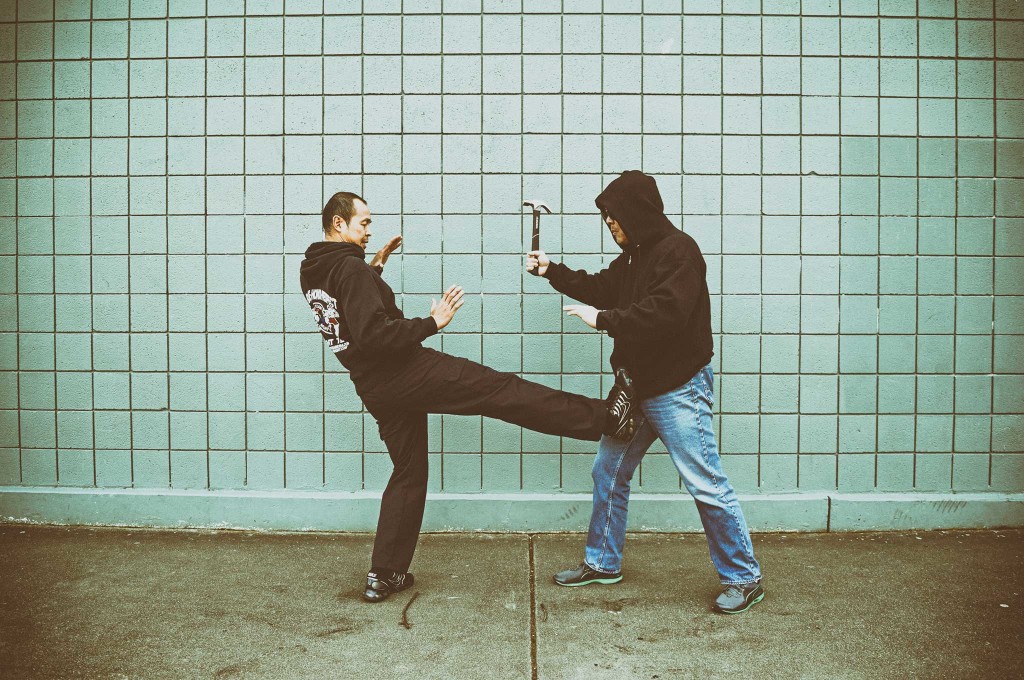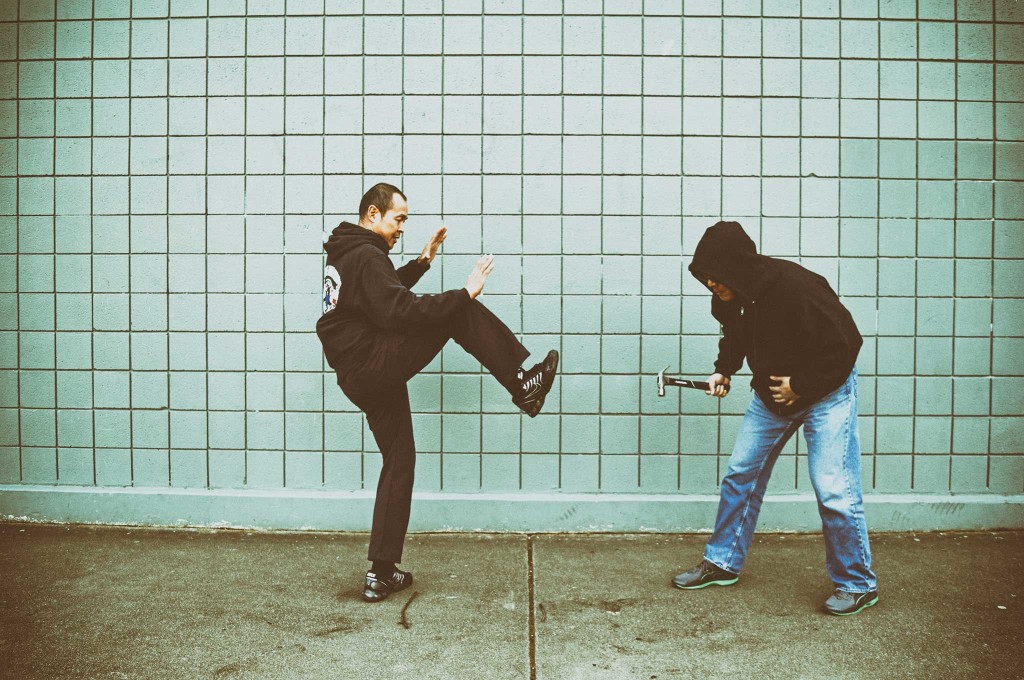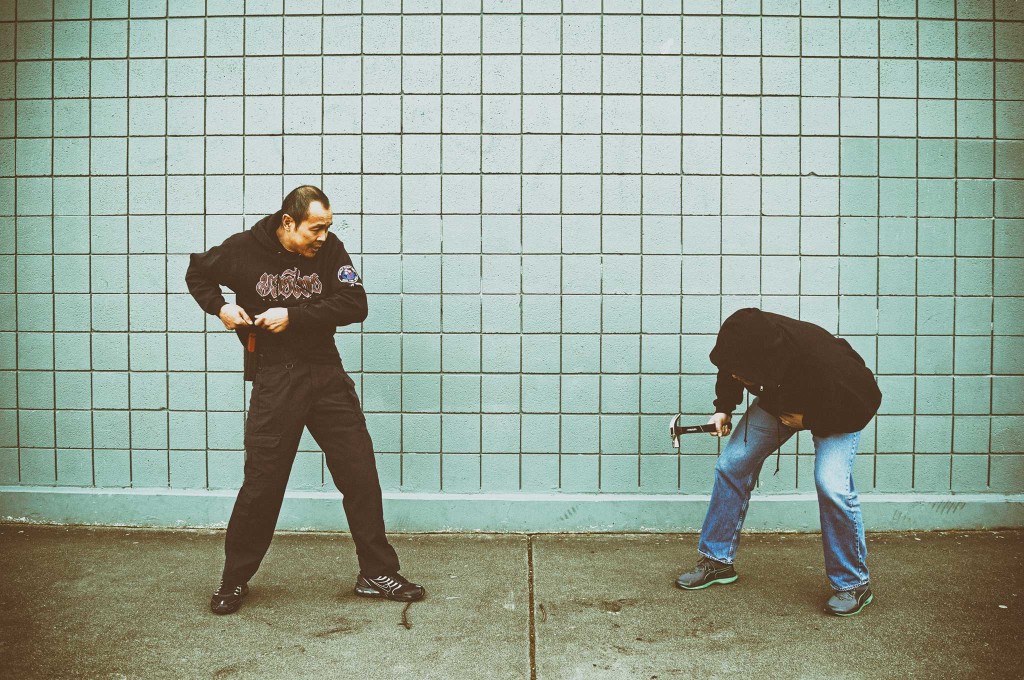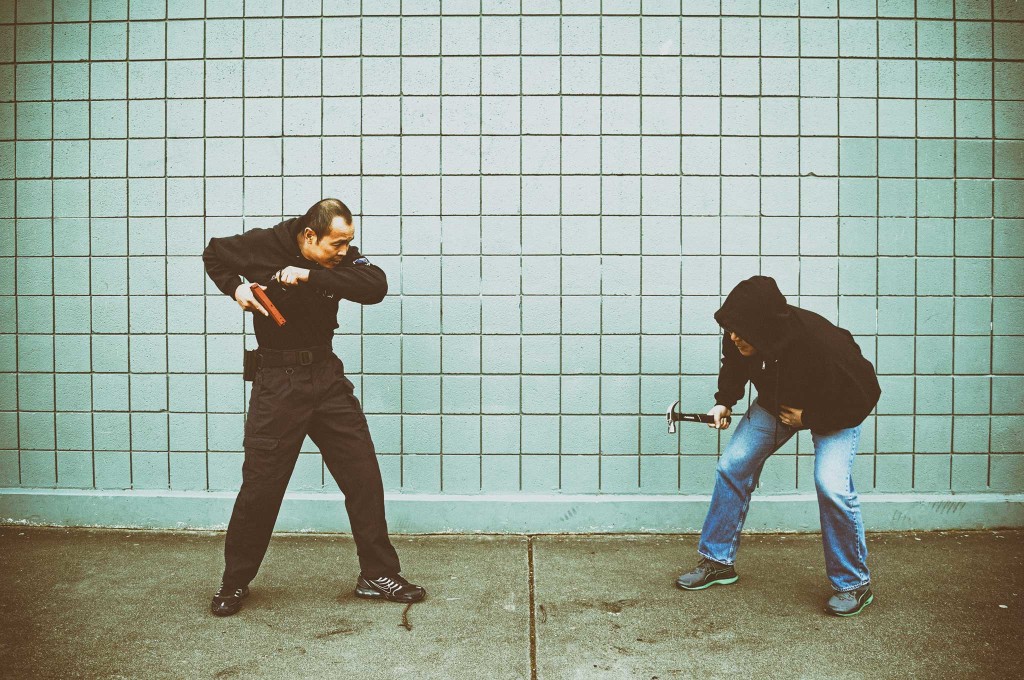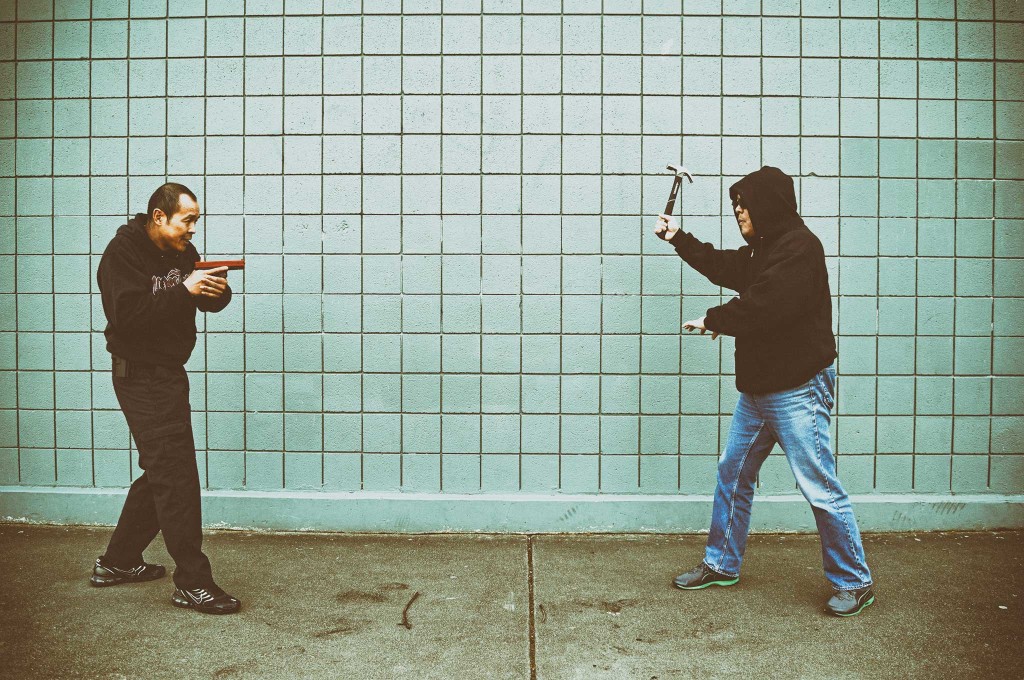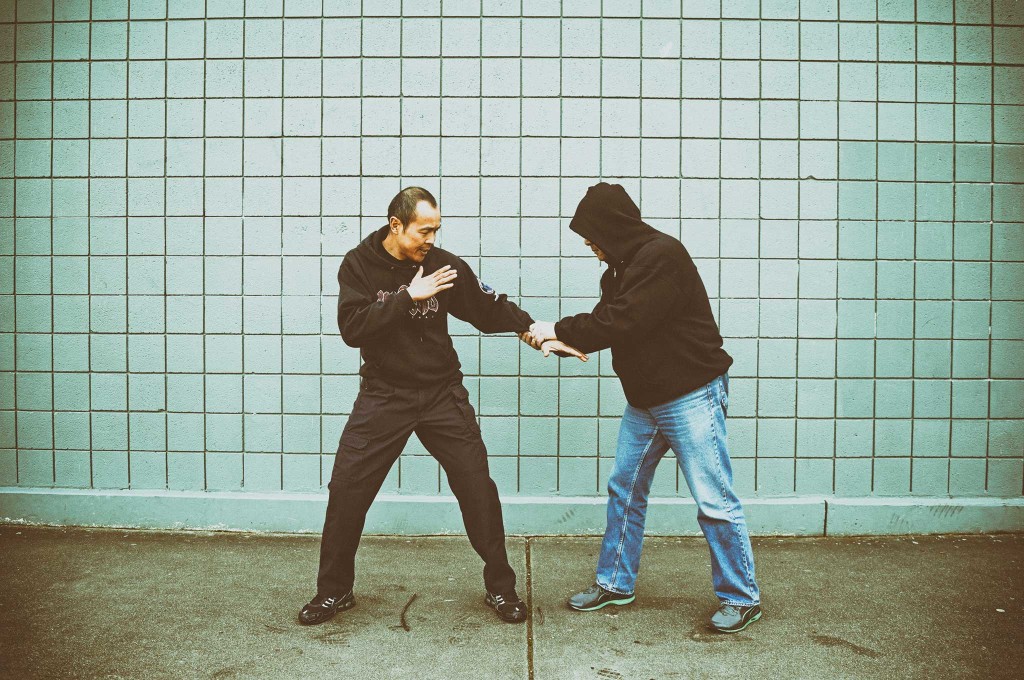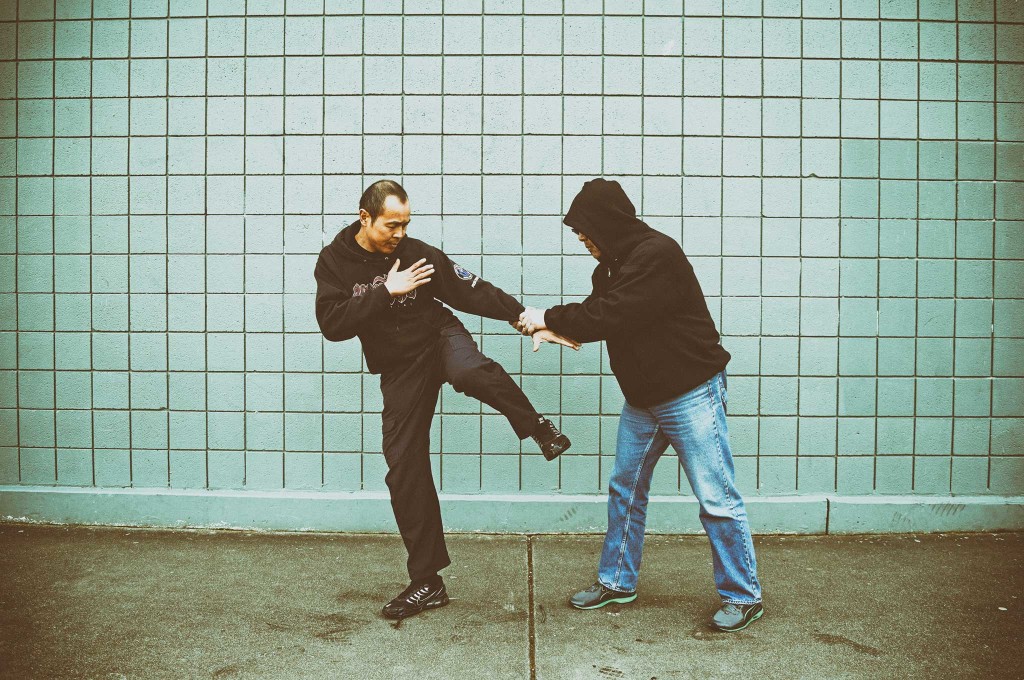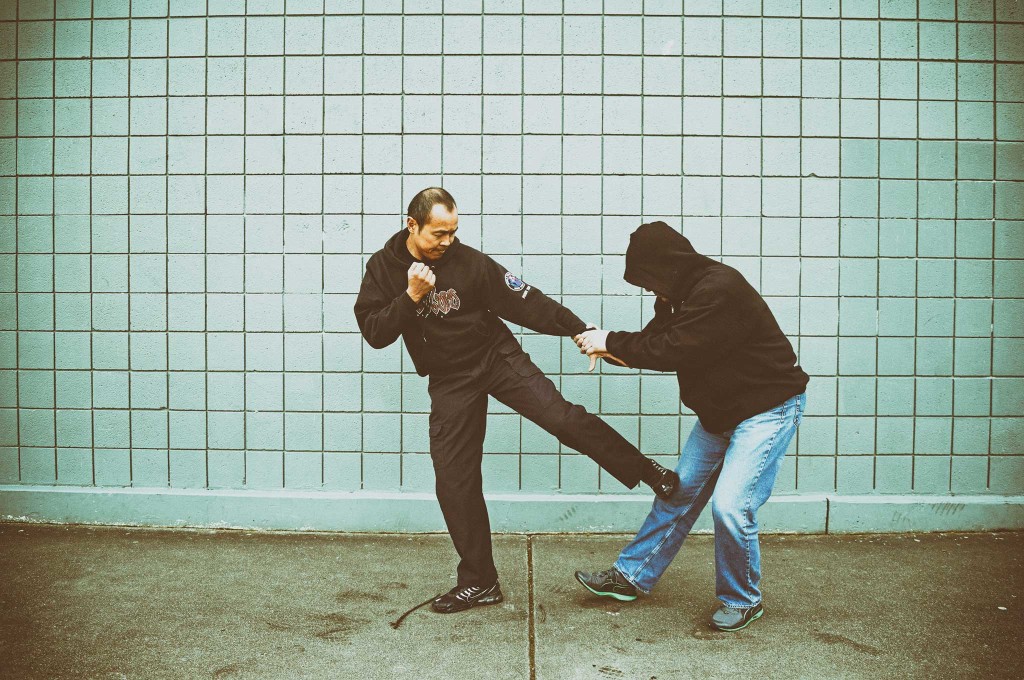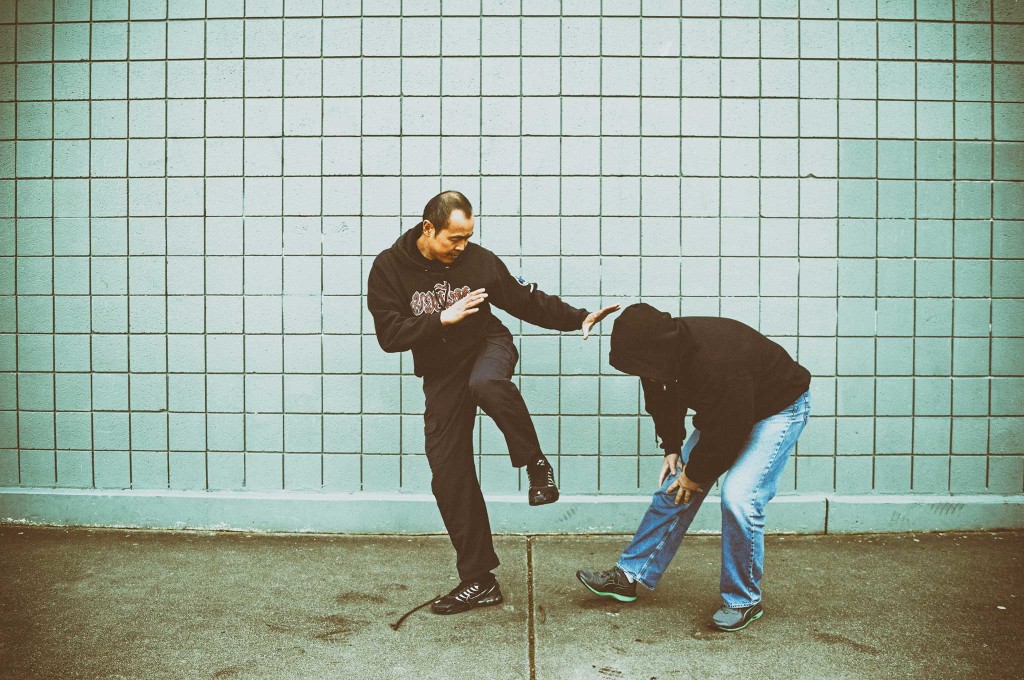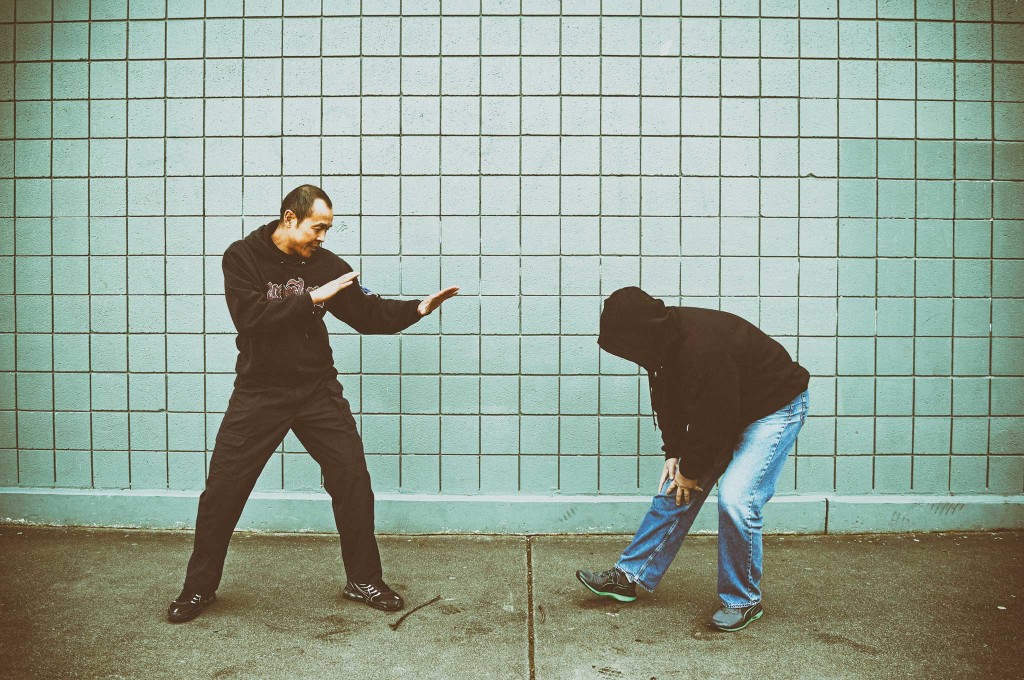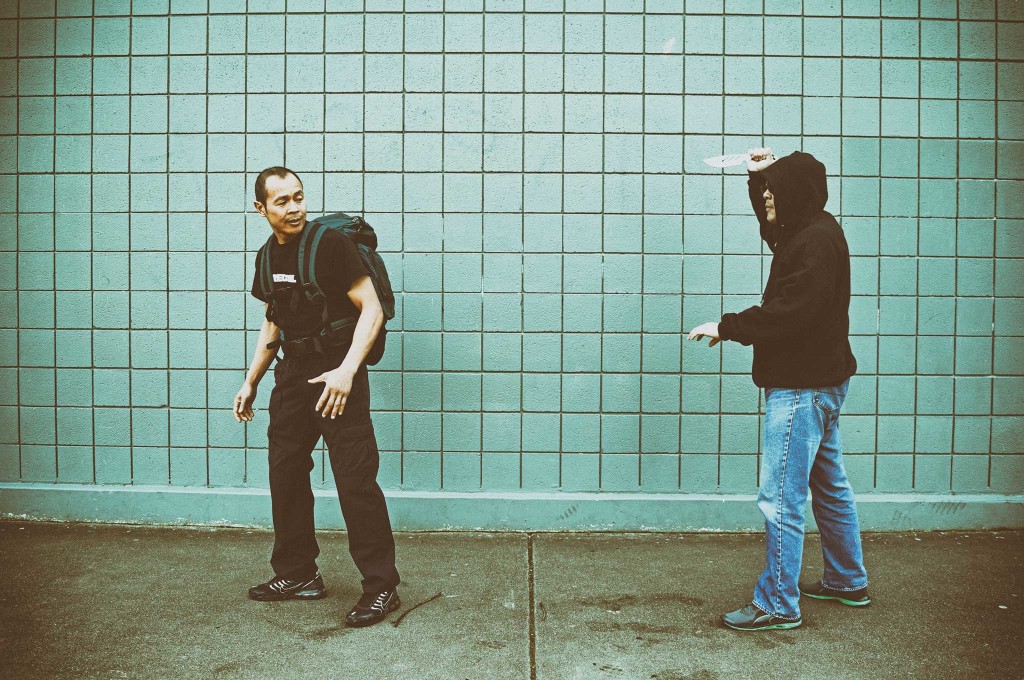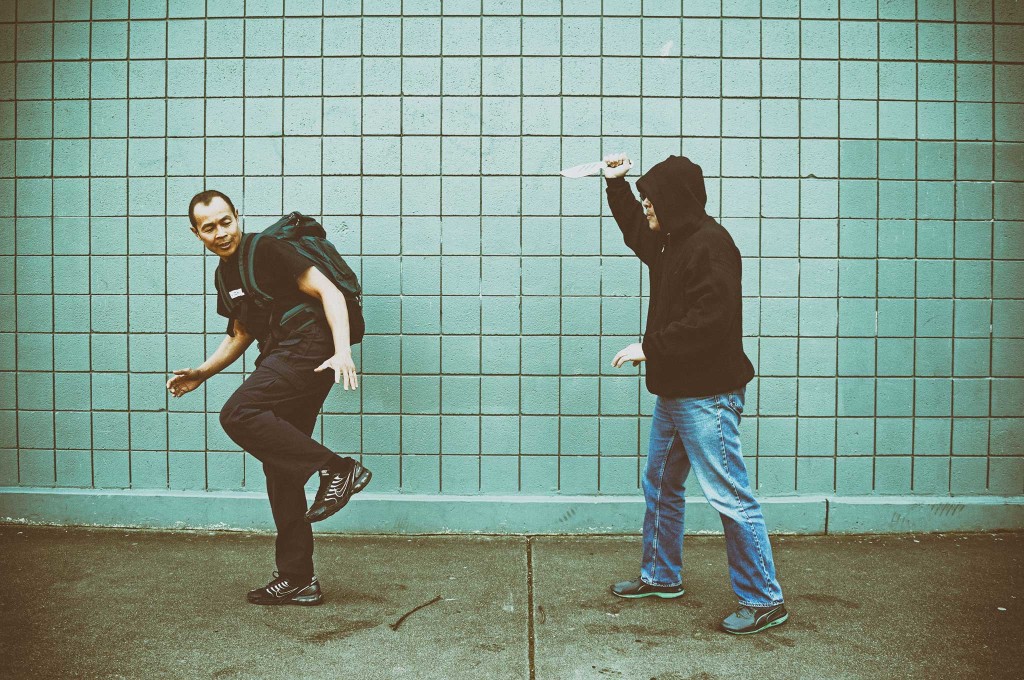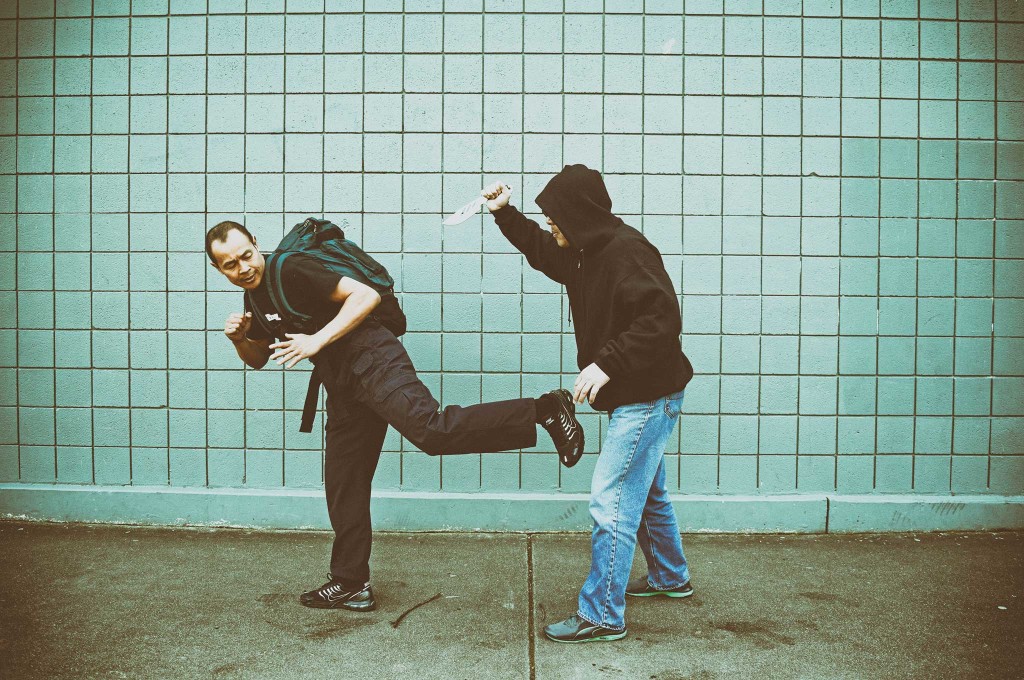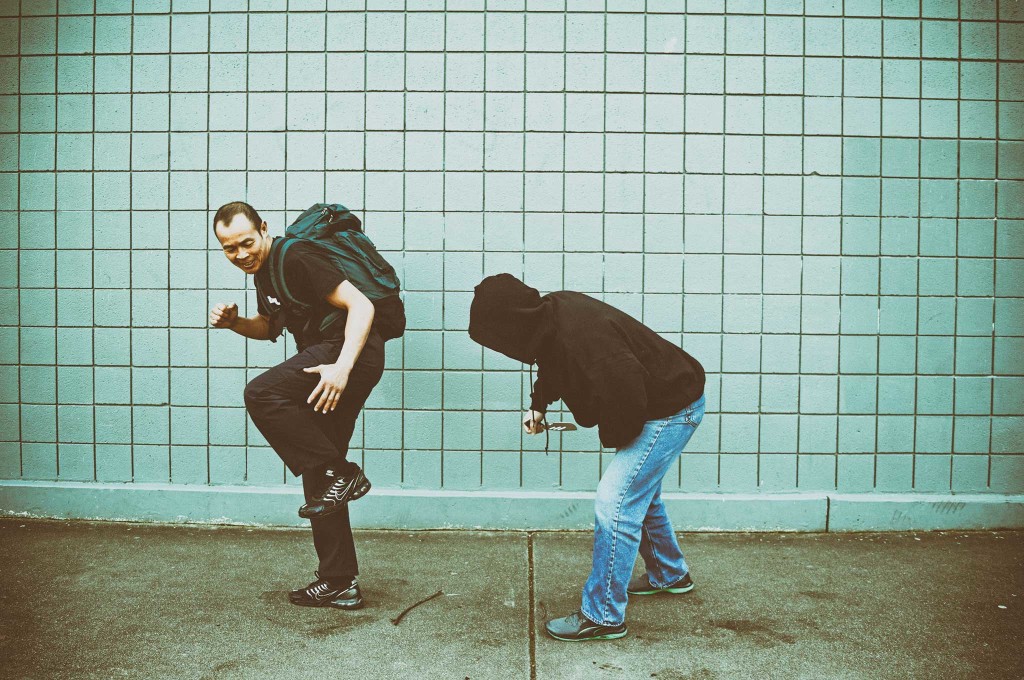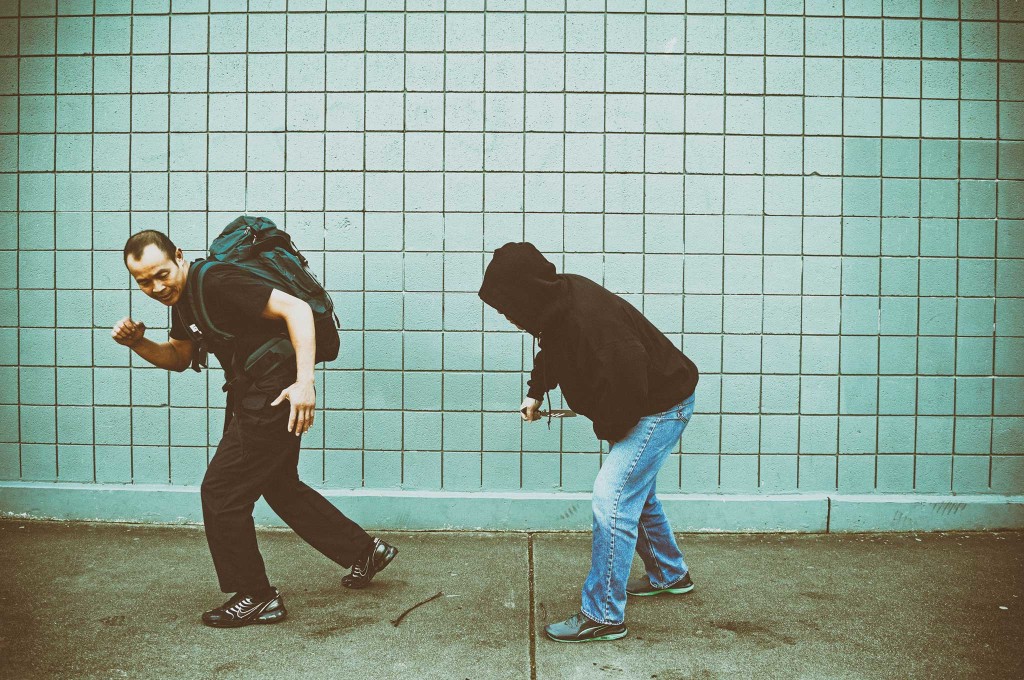Illustrations by Sarah Watanabe-Rocco
It wasn't my call to make, and this wasn't some goofy action flick on TV. There were hundreds of lives at risk if the rat's nest of wires I glimpsed was actually a bomb. And if it was an explosive device, and if I sent a train attendant toward him, I knew that my sweet wife, everyone onboard, and I would likely find out if there was a God that morning.
My mind reeled with the weight of my predicament, and my stomach was close to losing its contents. I was absolutely sure I saw something to be worried about — and it was my job to say something. But if he really was a bomber and someone spooked him, we were all dead. For a second or two, I tried to figure out which end of the train would put us farthest away from the man, but I tossed aside the idea of escape. There was no escape on a high-speed train in a tight-fitting tunnel under the English Channel. So I rallied my courage, discussed the plan with my wife, and wasted no more time with indecision — since these might be the last few minutes of our lives.
In this gripping installment of What If?, we've been asked to face a disturbingly realistic scenario: What would you do if you and your spouse were on the same train as a suicide bomber?
To get different takes on this modern menace, RECOIL OFFGRID asked three survival writers to build a story from their own perspectives and experiences. For this installment, we have Erik Lund (a federal law enforcement agent with a bevy of tactical and survival experience) and Hakim Isler (a wilderness expert, martial arts instructor, and former psychological-operations sergeant with the U.S. Army). And for a third point of view, I've been a professional survival instructor for more than 20 years, and I've written multiple New York Times-bestselling survival manuals.
Scenarios like this make me wonder if there are such things as “no win” scenarios. Hope you're not reading this on a train.
The Scenario
Situation Type
Potential suicide bombing
Your Crew
You and your wife, Sara
Location
The Channel Tunnel
Season
Early summer
Weather
Partly sunny; mid-70 degrees F
The Setup: You're a fit male in your late 30s named Johnny, married to an equally fit wife named Sara. Living in North Carolina, you both own an online business selling protein bars marketed to outdoorsy types. You've run, hiked, and traversed almost every major trail in the eastern United States that doesn't require an ice ax and mountain-climbing rope. It's time to expand. You head to France, where you hope to see the sights, hit a few trails, and then take the underground Channel Tunnel (or Chunnel) to England for more adventures.
The Complication: At the Chunnel station in Calais, France, you and your wife enter the high-speed train looking for your assigned seats in standard class amongst the sea of tourists, Britons going home, and French headed for England. That's when you notice something: while everyone's wearing T-shirts and jeans or shorts, there's a man wearing a three-quarter-length brown jacket. Not exactly seasonal. Plus, he seems confused, or maybe anxious, as he looks for his seat.
Just as he finds his row, a rather large woman accidentally bumps him, briefly exposing what's underneath the jacket: a vest filled with an intricate web of wires and plastic bottles. Is this a prank? Or some kind of emergency drill, you think. No, I have to treat this like what it looks like: a suicide bomber. He quickly covers up his jacket, hoping no one noticed. No one does. Except for you.
The New Plan: As the train glides on the tracks roughly 150 feet under the seafloor, you have about 23 miles and 30 minutes to figure out a plan. Will this terrorist explode himself (and destroy this train) halfway through this engineering marvel called the Chunnel or wait until we've stopped at Folkestone on the English side? Or maybe he'll do it when we reach London to make a political statement in the heart of the United Kingdom? And how the hell did he get the vest on board? It doesn't matter. You whisper your plans to Sara and start steeling your resolve.

Federal Agent: Erik Lund's Approach
I felt a small little punch on my arm and looked over at my wife, Sara. “Hellooo … come back to Earth, spaceman Spiff,” she said. I smiled back and apologized for being distracted, but my mind was still trying to make sense of what I'd just seen. It sure as hell looked like a bomb in some sort of suicide vest, but I couldn't be positive. My eyes tracked the man to his seat, while I tried not to look like I was watching him.
The man continued to stumble around, taking extra care to not let anyone incidentally touch him. The man finally found his seat, four rows up from mine on the other side of the aisle.
I whispered ever so quietly in Sara's ear: “I think the man in front of us is wearing a suicide bomber vest.” Sara pulled back with a smile on her face until our eyes locked. We had been together long enough that she recognized the look in my eyes; this was no joke. She leaned back in and started to ask a question. I stopped her and motioned to our phones.
I texted her the man's description and seat location, followed by what I had seen. She looked freaked, but took a breath. “What do you want to do?” she texted me.
Over the next few texts I laid out my plan. I wanted to get a picture of the man, and then we would move forward on the train to the lounge car. When we found train officials, we'd notify them and give them the picture. Sara acknowledged the plan and nodded she was ready. I stood up and pulled down my pack, then slumped back down into my seat.
Reaching into the pack, I pulled out a 2-foot length of looped 550 paracord. On the outside of my pack was a large heavy-duty Masterlock keyed padlock. I unlocked it, attached it to the looped paracord, and stuffed it into my pants pocket. It would make a devastating impact device that could easily shatter a human skull if swung hard enough. I looked over at Sara as she was doing the same with hers.
“Just in case,” I whispered, as a knowing smile slipped across my face. “I love you.”
I stood up and let Sara get into the aisle, following her as we moved forward slightly. When I got next to the man I called to Sara, “Hey, come take a selfie with me.” Smiling, she turned around and came back. As she did, I noticed the man shift his hand into his jacket. He clearly was on edge and possibly starting to panic at the thought he might be discovered. This wasn't going to work, and I needed to change my plan — fast — before he decided now was as good a time as any to detonate the explosive. I threw out my hand and pushed Sara back.
“Let's do it up there, the light is better,” I said, pushing Sara up a few rows. She didn't know why I changed our plan, but played along.
A few rows up, an older man stood up from his seat and held out his hand, blocking Sara in the aisle. Aww … f*ck me. This guy is on to us! I shoved my hand into my pocket, grabbing for the paracord on my improvised medieval mace.
The man blocking our path started saying something in French. I had no idea what he was saying, but the determination in his voice was clear. As I went for my improvised weapon, Sara spun around and grabbed my hand, still in the pocket. “Hey honey,” she said,” he wants to take our picture for us.” Sara's intelligence and fluency just saved my illiterate ass from striking this dude. I said, “Tell him thank you, but we'll do it ourselves.” Sara nodded and translated the message.
When we got a few more rows up, we turned around, hugged each other with big smiles. I held out my phone like I was taking a selfie of us, but intentionally didn't switch the phone camera to face us. I snapped a quick picture of all the people in his section of the train with nobody the wiser. To complete the charade, I showed the picture to Sara. She smiled and kissed me, then we turned around and moved into the next train car.
I stopped briefly to look at the picture. It was near perfect; I was able to zoom in on the man as he sat in his seat. All of his facial features were crystal clear, and the police should have no problem identifying him. I even noticed that he'd taken his hand back out of his coat.
Arriving in the bar buffet compartment, Sara and I found an empty spot and waited for a waitress. After a few moments, she came over to take our order. I pulled her close and whispered what I had seen. The waitress tensed up, then collected herself. Stepping back, she smiled and said she would check to see if the train had that wine available and quickly left the compartment. In a flash, a man who identified himself as a manager arrived, asking us if we could come with him to view the limited selection of wines the train had for special occasions. Sara and I nodded, following him out of the compartment.
The manager led us through a door marked “employees only,” and we soon found ourselves in an operations room near the power car. There I explained to the security chief what I had seen and showed them the picture. He asked a few questions about the details of the bomb and thanked us for our quick action in reporting the incident. The security chief left the room, and the manager guided us back to a premier cabin. He advised us to stay in the cabin until someone came for us and that we'd reach our first stop in about another 10 minutes.
We sat in silence in the cushy seats. Picking at a loose thread, Sara finally said, “What do you think they're going to do?” I didn't know, but figured that if the man wanted to blow up the train in the tunnel, he'd have done it already. It seemed that we'd be OK at least until the first stop.
We sat in silence for the next nine minutes until the train made its first stop. As people started to disembark, a train attendant led us off the train and guided us through the station to a security area, where we met a police officer. He asked us to provide a detailed statement and description of what happened.
After a few hours, Sara and I were allowed to leave. I asked the one of the officers what happened. He reported that several undercover agents boarded the train as passengers, taking up several seats around the man. Without warning, the agents converged on the man and were able to subdue him. The suicide vest he was wearing was a real vest, but it had no explosive compounds. Sara and I gave the officer a look that betrayed our lack of understanding. Seeing our confusion, the officer added that terrorists often like to perform test runs to see if they can get a simulated vest through security screenings.
Laughing, he said that the terrorists don't like to waste suicide bombers, so they do test runs to see if they can effectively breach security before the actual attempt. Who would have thought terrorists are concerned for the safety of their suicide bombers?

Former U.S. Army Psy-Op Sergeant: Hakim Isler's Approach
Without a doubt, I saw a bomb strapped to that man. Before I said anything to my wife, Sara, I wanted to get more details. After the train pulled away, I tapped the video camera app on my phone and hit record. I covered the screen with a hand towel while I walked to the bathroom. On my way there, I surveyed the exits and the passengers.
Once in the restroom, I checked my footage. It had a decent view of the man, but mostly from behind. I decided to record again on my way back. Once back in my seat, I reviewed the video again. It was crooked, but I got some really good frontal video of him.
As I began taking screen shots from the video, Sara asked, “What are you doing?” Even whispering felt too risky, so I opened the notepad app and wrote a message. I typed that she shouldn't get alarmed, then summarized my observations. Sara immediately went pale. I showed her the photos and the location of the man. Without hesitation she typed, “We should try to stop him!”
We had to come up with a plan. Because of our lack of professional security know-how, I felt it would be best to get a train attendant involved.
Sara and I crafted a note on my phone detailing my observations, a photo of the bomber, his seat number, and what seat we were in. We used her phone to find Eurostar's website. There was a contact form, but no direct email address, so I couldn't figure out how to attach the photo. I started to curse under my breath, but my tech-savvy wife grabbed my phone. Mumbling something about Google Photos, she managed to come up with a link for the photo and pasted everything into the contact form. At least if the bomb went off in the next second, they'd have all the details. Then I emailed it to my dad for good measure and rang the button for the attendant.
When he arrived, I said, “Someone dropped their phone, and it seems to have their name on the home screen. Do you know who this is?”
I handed him the phone with the note on the screen: “This is not a prank! Do not look suspicious. The guy four seats up with the coat on has a bomb. I saw it under his jacket when we got on. Please alert your supervisors. Walk away with my phone and please email my wife with any instructions.” The rest of my message included Sara's address and a summary of what we'd already done.
The attendant went pale, frightening me as I thought he was about to break down. Suddenly, he straightened up and smiled: “Thank you sir, I'll see if I can find the owner.” Then he walked away.
A few minutes later, Sara received an email: “Thank you for informing us about the situation. We are aware and taking measures for everyone's safety. Please do not make contact with anyone else, as we do not want to start a panic. Stay seated until otherwise notified.”
Sara and I looked at each other in terror. We held each other's hand and sat back.
For the next 10 minutes, we waited to see what would come next, but the anxiety became too much to bear. This guy could detonate his bomb at any time, and I would rather go down fighting. I wrote Sara a message — she agreed. She had a small 8-by-6-inch mirror in her bag; I wrapped it in my towel, wedging it at an angle between the seats. Carefully breaking it while I coughed to mask the sound, I was left with a sharp point. I wrapped the other end in the towel and gave it to Sara.
We formulated a plan. I would walk toward the bathroom then pretend to feel ill and dizzy, apologize to the others, and sit down in front of the bomber. Appearing motion sick would be much less threatening than behaving like a loud American, trying to spark a conversation with no good excuse to sit down near him. Sara would sit in the seat behind him with her improvised shank in her purse. I was stronger, so if either of us might be able to restrain his hands, it would be me. From our positions, we'd wait for the authorities to act. However, if the man made a move before then, we'd be close enough to do something.
This was a Hail Mary play at best, but it was a better backup plan than sitting back, waiting to die. Sara and I looked into one another's eyes. We kissed each other for what might be our last time.
I took a deep breath then I was off. I started to stumble toward the bomber's seat. “I gotta sit here,” I said, trying to sound weak. “I'm feeling dizzy.” I plopped down, apologizing to the people around me, and leaned my head back. The bomber didn't say anything. I felt a small bit of relief. I raised my head slightly to see Sara just reaching the seat behind the bomber. Instead of a subtle cough, I nervously exploded with a mucus-laden bellow. The guy glared at me. “Sorry,” I said, as Sara quietly took the seat behind him. At this point, it occurred to me that perhaps I shouldn't have given my phone away, as I could no longer communicate with her.
After a few minutes, two attendants we'd never seen before entered from the front. The bomber took notice. Then two large men dressed in regular clothes entered from the rear. This agitated the bomber, as his head swiveled back and forth. The attendants tried to play it cool, but it was clear to me the four men were headed toward us. Clear to the bomber, too.
In my periphery, I could see the bomber's hands reaching. He wasn't waiting to see what would happen next; he was going to detonate the bomb. I screamed, “Bomb!” as I sprung out of my seat and grabbed his hands. I barely got a hold of them when one of the attendants joined the fray, but fell on me and broke my grip. He also obstructed the other attendants' path.
The bomber shifted away from the aisle, toward the window. I had smashed the detonator out of his hand in the struggle, but now he was reaching for it as I grabbed his legs. Suddenly, the side of a closed fist suddenly hit him in the neck.
Blood began to squirt from between his fingers as he frantically clutched his neck.
Everything felt like it was moving in slow motion; I followed the hand back and saw it was Sara's. Without hesitation, she stabbed four more times.
“His hands!” I yelled. The attendant on top of me leaped forward and grabbed the bomber's wrists, joined by one of the plainclothes men who dove over the seats and onto the bad guy. The three of us held his limbs down until his resistance melted away. The other attendant kept watch of the passengers in case of an accomplice, while the other plainclothes man took out plastic zip ties and cuffed the bomber's feet together and his hands above his bloody head.
Hours later, in the safety of the Folkestone station, we learned from a police official that the two attendants and two plainclothes men turned out to be undercover security agents. The official admonished us for intervening, forcing the agents to act earlier than they had planned and saying we were lucky to be alive … but reluctantly thanked us for our bravery. The blank look on Sara's face told me we'd be dealing with the aftermath of her heroism for many years to come.
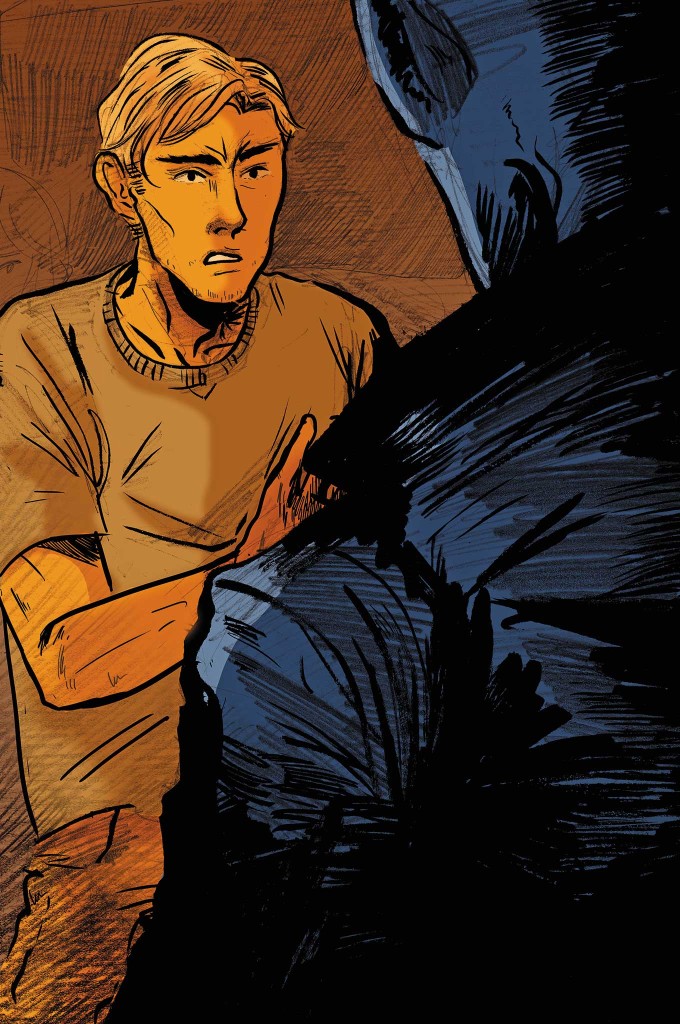
Survival Expert: Tim MacWelch's Approach
“Sara? Did you see that guy?” I whispered to my wife. “What guy?” she replied. A surge of emotion welled up inside me. It felt defensive, a blend of being afraid for my wife's safety and anger over the fact that she might be at risk. Sara had always been able to read me like a kid's book. Big letters, simple words. The color drained from her face as she picked up on my fear. “What's going on?” she asked in hushed tones.
I quickly but quietly explained what I had just seen — the man with the long coat, the wires, and bottles. She rose in her seat a bit, pretending to adjust how she was sitting, to sneak a glance in the direction of the man. She whispered back to me that she just saw the back of his head, nothing more.
My wife stared at me for a few moments, while I stared at the man who might have been planning to kill us all. She broke my concentration when she quietly said, “Whatever you're planning, I'm in.”
Her words echoed in my head. I loved my wife more at that moment than ever before. Not only because I was afraid I might lose her, but also because I'd never been more proud of whom she was. My mind raced as I considered the possibilities. Finally, I concluded, “We have to immobilize him. If he has a bomb, he'll have a trigger. Keeping him from getting to it is the only way that we can all get off this train alive.” Her eyes locked with mine, and I could see her thinking it through. She nodded, signaling that she understood.
“How are we going to grab him?” she asked. “You pull him out of his seat by his left arm, and I'll come in from behind and grab his right.” Sara nodded again, and asked, “armbar?” I nodded and gave a halfhearted smile, even though this was hardly the time for smiling. Still, she was ferocious at jiu-jitsu and, for a second, I felt something close to hope.
She grabbed my hand and squeezed like she was trying to make diamonds. I pulled her hand up to my lips and kissed it softly. After a bit, we both stood up. Sara took the lead down the train aisle, stopping in front of the man. I was nearly behind him when the unimaginable happened.
A man stood up suddenly, right in my face. He spoke French, and it seemed like he was asking my pardon for something. He blocked my view of my wife, which set me on edge. And apparently she wasn't the only one who could read my emotions like a book. The man's jovial tone switched gears quickly to a tone of loud annoyance, and people were starting to stare at us. As a torrent of French words fell on my uncomprehending ears, I thought I picked out the word “American,” then some bad words, and thank God, I picked out the French word for “bathroom.” Then I understood and backed into a vacant seat, allowing him to pass.
With a snort of derision, he walked away and I finally saw Sara again. When she saw me start toward her, she knew it was showtime. I slid into the space behind the man, ignoring what the people sitting there might think. My muscles were tight, ready to tear from their tendons or spring forward. As the bomber looked up at my wife, Sara hit him with her most dazzling smile — the one she used to get my attention for the first time so many years ago.
“I love your coat!” she exclaimed, “You must tell me what brand it is and where I can get one.” I stared down at the back of the man's head, his dark hair wet with sweat. Sara grabbed the man's coat sleeve, feigning to look at the fabric. As the man rose from his seat to protest, he was halfway under Sara's control, and I grabbed his right arm to lift him out of his seat.
He cried out in surprise and anger, as I tightened my grip and tried to thread him between the seats toward the floor. Slender and sinewy, Sara had already applied an armbar to the man's left arm as soon as his back hit the floor. And I did my best to pin his right arm. During the scuffle, his coat opened up.
It wasn't long before an Irish woman saw the wires and screamed, “Bomb! He has a bomb!”
Then all hell broke loose. The roar of screams and exclamations was almost deafening in the tight quarters. One man started to kick the bomber in the head, but lost his balance and nearly fell on my wife. But most people just scrambled away from us. That's when I noticed the bomber's feet. He was kicking his left foot at the heel of his right shoe, as if trying to remove the shoe. My wife and I were locked onto his arms and torso, but neither of us could reach his feet without letting go.
As his shoe finally came off, I saw a red wire attached to the shoe and running up the man's pant leg. “The trigger is his shoe!” I yelled. There was only one person left in our vicinity, the hefty blonde woman who had bumped into the bomber earlier. She had been sitting there in her seat, right next to the empty seat of the bomber. Her mouth had been agape in surprise, until I called her attention to the shoe and the wire. She frowned and slid down from her seat, not gracefully, until her knees and calves covered the man's ankles and feet. He cried out in pain, and she looked directly at me.
In a thick British accent, she said, “Don't worry, love, I've got this. I'm from Manchester, and where I'm from, we get things handled.”
My muscles began to tire as I held the man like a tourniquet, but in a few moments, several train attendants and a uniformed police officer came to our aid. As they handcuffed the man to seat legs, keeping him in a spread-eagle position, I grabbed my wife and held her as tight as my waning strength would allow. I could tell she was spent too, and it was then that I finally noticed that the train had stopped moving.
As she and I moved away from the bomber and the growing pool of authorities and train personnel, a strange pulse rocked the train, as if some giant hammer had just struck it from above. Sara looked at me and tears began to pour from her eyes. “He wasn't the only one,” she said.
And then the lights went out.
Conclusion
In every edition of What If?, we encourage our readers to ask themselves some key questions. Did the characters do the right thing? Could this situation happen in real life? And if this happened to you, what would you have done differently?
In this tale, my character saw something and didn't say anything to the authorities. This is a piece of fiction portraying a very specific scenario. It shouldn't necessarily stand as an example of your behavior in a similar or different situation.
In this day and age, everyone should say something if they see something amiss. It's our duty to our fellow humans — to be the extended eyes and ears of the law enforcement professionals who strive to keep us all safe, every single day. And unless we have the training, resources, and backup that law enforcement would have, we typically should leave the confrontation to the professionals. That said, every life-or-death situation is unique. It's up to you to practice your situational awareness every time you're out in a public place, and to trust your instincts. You never know when these two assets will save lives. And we'll say it again — if you see something, say something!
Meet Our Panel
 Tim MacWelch
Tim MacWelch
Tim MacWelch has been a survival instructor for more than 20 years, training people from all walks of life, including members from all branches of the U.S. Armed Forces, the State Department, DOD, and DOJ personnel. He’s a frequent public speaker for preparedness groups and events. He’s also the author of three New York Times-bestselling survival books, and the new Ultimate Bushcraft Survival Manual. When he’s not teaching survival or writing about it, MacWelch lives a self-reliant lifestyle with his family in Virginia. Check out his wide range of hands-on training courses that are open to the public at www.advancedsurvivaltraining.com.
 Erik Lund
Erik Lund
Erik Lund has more than 20 years of law enforcement experience - with much of that time spent as an instructor of frearms, defensive tactics, and use of force. He served as a Virginia State Trooper before accepting a position as a federal agent. Lund is also a senior instructor at Mike Seeklander’s Shooting-Performance LLC, a tactical training company. As a champion competitive shooter, he’s earned several regional, state, and national three-gun titles and is ranked as a grandmaster by the United States Practical Shooting Association.
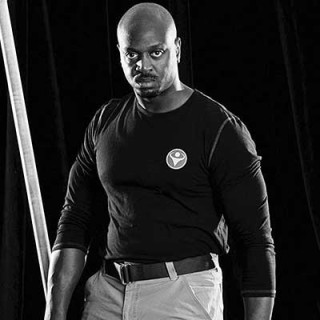 Hakim Isler
Hakim Isler
Hakim Isler (aka The Black MacGyver) is a man of many skills — a combat veteran, trained survivalist, fourth-degree black belt in To-Shin Do Ninjutsu, Kali and Silat martial arts instructor, certified close protection specialist, and professional self-defense and combat weapons instructor. He’s a published author, trainer, speaker, TV personality and inventor of survival weapons and products holding several patents. Hakim is the founder/co-founder of The SOIL Foundation, which is dedicated to assisting veterans and at-risk youth by providing wilderness therapy for our nation’s heroes and children. He’s most often recognized for his television appearances on Discovery Channel’s Naked & Afraid and FOX’s Kicking & Screaming. Isler is the owner of Elevo Dynamics, a 24-hour family gym and martial arts center located in downtown Fayetteville, North Carolina. www.hakim-isler.com

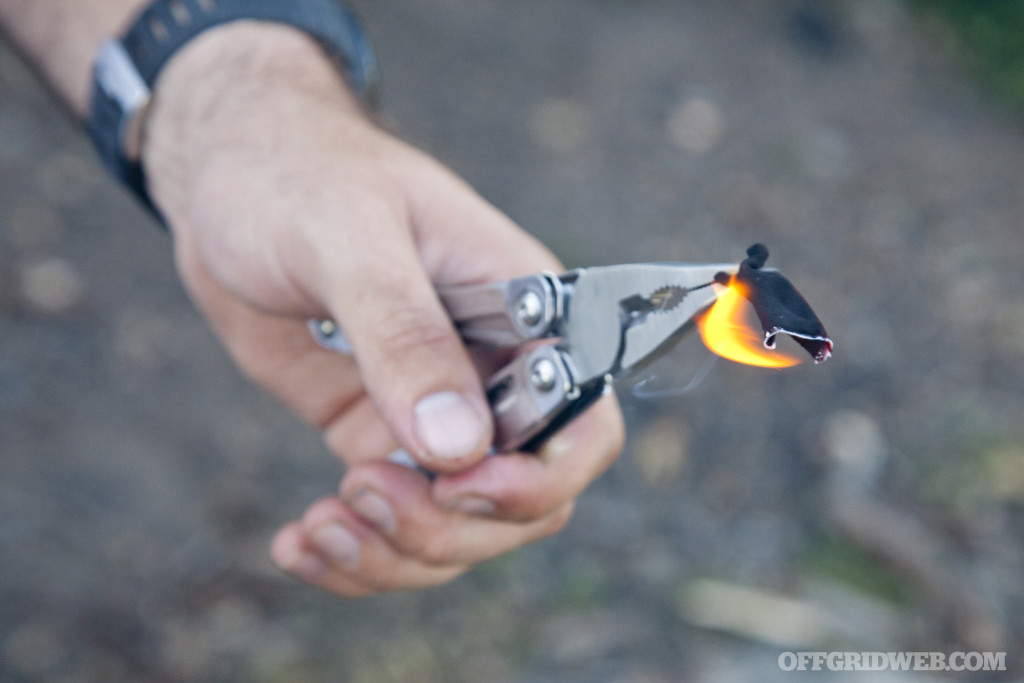









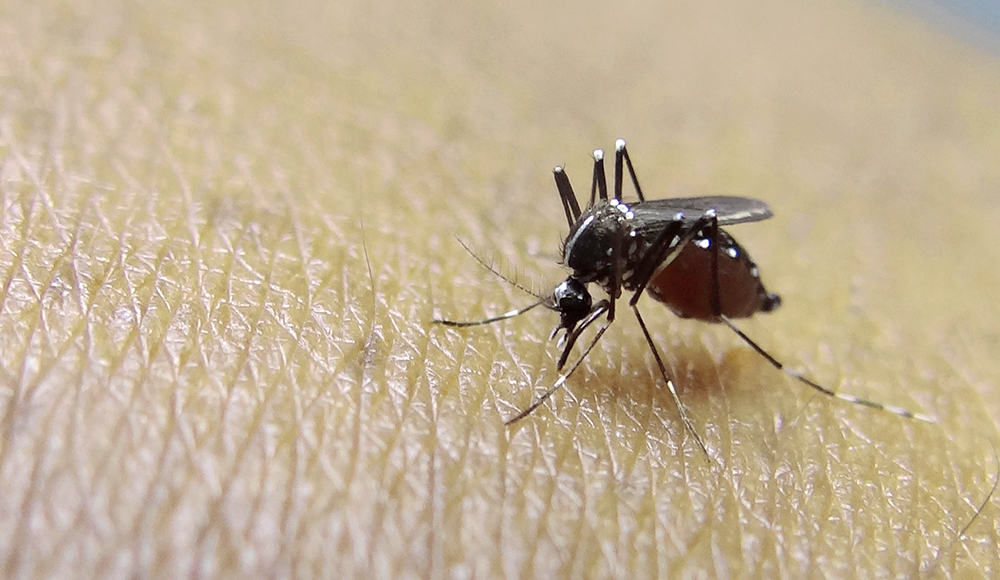

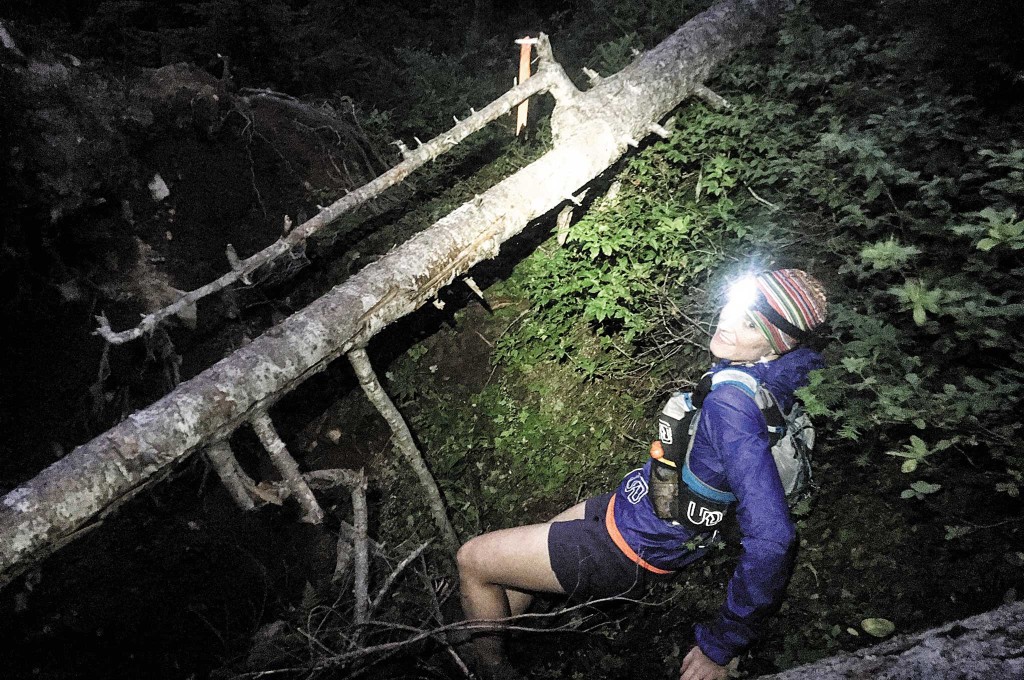
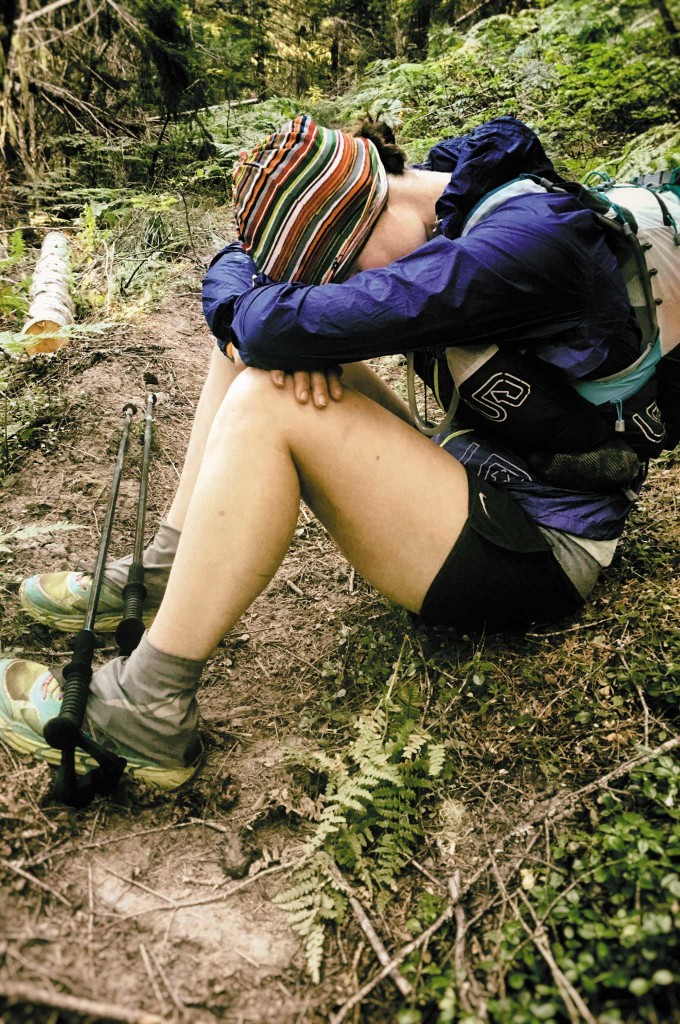


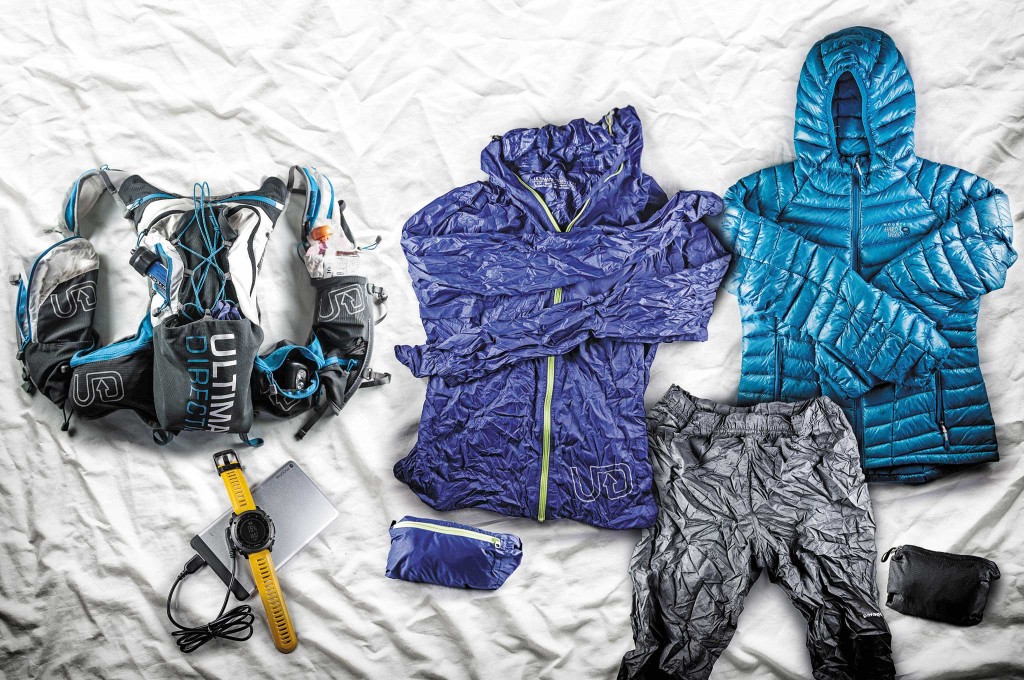



 Tim MacWelch
Tim MacWelch Erik Lund
Erik Lund Hakim Isler
Hakim Isler

